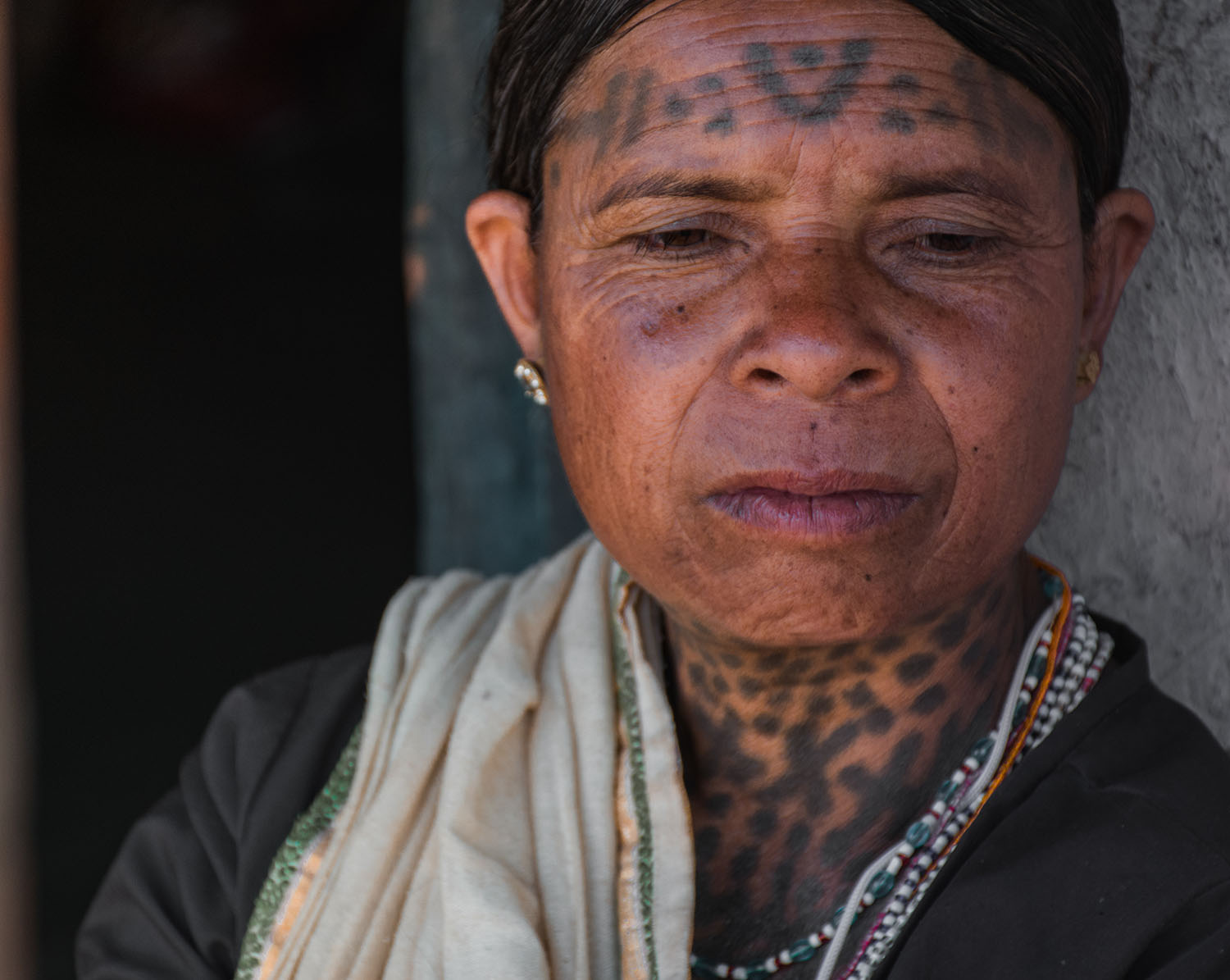ARTICLE
Godna
Commonly understood as the practice of tattooing, godna is an ancient art form practised across numerous communities in the country. Practised mostly amongst women, godna is both seen as a form of body adornment – as a marker of social identity within some communities – or as markers of time, with certain designs or motifs of godna created before or during important milestones in an individual’s life, such as the birth of a child or marriage. Most popularly, godna is practised amongst the Gond tribes of Chhattisgarh, Baigas of Madhya Pradesh, Dhanuks in Bihar and Banjaras in Rajasthan, amongst several others. The popular designs of tattoos are geometric shapes and patterns as well as celestial objects such as the sun and the moon. The popular belief among the practitioners of the art form is that, unlike jewellery, the body continues to remain adorned with godna even after death.
As indicators of the rites of passage in a woman’s life, the practice of godna begins as early as the age of eight for a girl. Subsequently, new motifs are created, for example, at the time of puberty, with the karelachani motif is inscribed on the forehead, neckline and arms; at the time of marriage, the machhimudi motif is inscribed on the ankles; and chhati godna is inscribed to mark the beginning of motherhood. The tattoos are mainly done by women on women and the motif and the placement of the godna may vary according to the tribe. Amongst the Dhanuks in Bihar, a non-dominant caste community, godna was used to de-glamourise women as it was believed that the tattoos would help keep them safe from dominant caste men’s unwanted sexual advances. Amongst the men of the Munda tribe, three straight vertical lines are inscribed on their foreheads, signifying the three times the tribe defeated the Mughals, thus acting as a record of historical events. Some communities use thorns, or sharpened bamboo sticks to pierce the skin along with the use of ink or a mixture of cow bile, soot, plants and pig fat. Ink may also be made from crushing and burning a variety of grape seeds or by using vegetable juice mixed with oil and soot. Depending on the size and location of the tattoo, the process could take several days.
In 1970, inspired by the art of godna tattooing, German anthropologist Erika Moser made a suggestion to the Dusadh Dalit community in the village of Jitwarpur in Bihar: that they convert godna tattooing into godna painting. Apart from an additional source to generate income, godna painting also became an alternative form of expression for the Dusadh community and they drew inspiration from nature and depicted plants, animals, birds and rivers – unlike the dominant caste traditions of painting such as Mithila paintings that are primarily devotional. Thus, the women of the community moved their designs to canvases – created using cow dung – and used vibrant natural colours to paint.
Godna painting remains a relatively lesser-known form as compared to kachhni and Mithila paintings. Still, primarily practised only by Dusadh artists, the paintings have evolved to incorporate religious imagery, including those of the deities. More recently, the paintings have begun to depict local heroes such as Raja Salhesh, whose bravery during the times of wars was passed on through oral narratives. Artists who have helped popularise the form include Chano Devi and her husband Rodi Paswan, and Ganeshwar Paswan, a disciple of Chano Devi and a Fellow of the Dalit Foundation that aims to create training centres for Godna Art.
Bibliography
Our website is currently undergoing maintenance and re-design, due to which we have had to take down some of our bibliographies. While these will be re-published shortly, you can request references for specific articles by writing to hellomapacademy@map-india.org.








